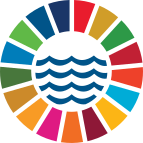Study on the reintroduction of Oyster beds
(
Government
)
#OceanAction41059
Description
Following on the reintroduction of undisturbed hard surfaces (artificial and/or restoration of habitat in the near future), the Belgian government voluntary runs a feasibility study in order to stimulate the presence of adult oysters and/or the development of biogenic reefs. The feasibility study aims to develop the most successful scenario's in order to stimulate the reintroduction of the species and will describe a stepwise approach and progressive implementation of different measures, taking into account the changes of its initial habitat.
After this study, there will be measures taken, compulsory of voluntary, in order to stimulate, hopefully in the most effective way, to obtain the colonization of the European oyster. The follow-up of this feasibility study is undefined at this moment and not taken up in this rapportage.
Methodology – the study is a desk study that will consult the existing project and will try to assemble the succesfull measures of former reintroduction projects into a feasible scenario. The most recent knowledge of the species, all factors with a negative of positive impact on survival and reproduction of adult oysters, as well as the knowledge of the Belgian North sea should be taken into account. The study will indicate which management and policy measures should be taken up in order to facilitate the appearance of the European oyster.
Follow up:
1/3 of the Belgian North sea a Natura 2000 site and the (former) hard substrates and former oyster beds are or were present in this area. This study can define more specifically policy and management measures that should be taken up to protect or facilitate the survival of the European oyster.
The windmills are as well (artificial) hard substrates. Because of the absence of fishery and maritime transport, the marine environment is less disturbed and is a profit for some species. There is a project of aquaculture of mussels started up. This study will focus and eventually recommend measure to be taken in order to facilitate the presence of the European oyster as a wild population.
Royal Belgian Institute of Natural Sciences - Directorate Natural Environment
SDGS & Targets
Goal 14
Conserve and sustainably use the oceans, seas and marine resources for sustainable development
14.1
By 2025, prevent and significantly reduce marine pollution of all kinds, in particular from land-based activities, including marine debris and nutrient pollution
14.1.1
(a) Index of coastal eutrophication; and (b) plastic debris density
14.2
By 2020, sustainably manage and protect marine and coastal ecosystems to avoid significant adverse impacts, including by strengthening their resilience, and take action for their restoration in order to achieve healthy and productive oceans
14.2.1
Number of countries using ecosystem-based approaches to managing marine areas
14.3
Minimize and address the impacts of ocean acidification, including through enhanced scientific cooperation at all levels
14.3.1
14.4
By 2020, effectively regulate harvesting and end overfishing, illegal, unreported and unregulated fishing and destructive fishing practices and implement science-based management plans, in order to restore fish stocks in the shortest time feasible, at least to levels that can produce maximum sustainable yield as determined by their biological characteristics
14.4.1
14.5
By 2020, conserve at least 10 per cent of coastal and marine areas, consistent with national and international law and based on the best available scientific information
14.5.1
14.6
By 2020, prohibit certain forms of fisheries subsidies which contribute to overcapacity and overfishing, eliminate subsidies that contribute to illegal, unreported and unregulated fishing and refrain from introducing new such subsidies, recognizing that appropriate and effective special and differential treatment for developing and least developed countries should be an integral part of the World Trade Organization fisheries subsidies negotiation
14.6.1
Degree of implementation of international instruments aiming to combat illegal, unreported and unregulated fishing
14.7
By 2030, increase the economic benefits to Small Island developing States and least developed countries from the sustainable use of marine resources, including through sustainable management of fisheries, aquaculture and tourism
14.7.1
Sustainable fisheries as a proportion of GDP in small island developing States, least developed countries and all countries
14.a
Increase scientific knowledge, develop research capacity and transfer marine technology, taking into account the Intergovernmental Oceanographic Commission Criteria and Guidelines on the Transfer of Marine Technology, in order to improve ocean health and to enhance the contribution of marine biodiversity to the development of developing countries, in particular small island developing States and least developed countries
14.a.1
14.b
Provide access for small-scale artisanal fishers to marine resources and markets
14.b.1
Degree of application of a legal/regulatory/policy/institutional framework which recognizes and protects access rights for small‐scale fisheries
14.c
Enhance the conservation and sustainable use of oceans and their resources by implementing international law as reflected in United Nations Convention on the Law of the Sea, which provides the legal framework for the conservation and sustainable use of oceans and their resources, as recalled in paragraph 158 of "The future we want"
14.c.1
Number of countries making progress in ratifying, accepting and implementing through legal, policy and institutional frameworks, ocean-related instruments that implement international law, as reflected in the United Nations Convention on the Law of the Sea, for the conservation and sustainable use of the oceans and their resources
SDG 14 targets covered
| Name | Description |
|---|---|
| 14.2 | By 2020, sustainably manage and protect marine and coastal ecosystems to avoid significant adverse impacts, including by strengthening their resilience, and take action for their restoration in order to achieve healthy and productive oceans |
| 14.5 | By 2020, conserve at least 10 per cent of coastal and marine areas, consistent with national and international law and based on the best available scientific information |
Deliverables & Timeline
Resources mobilized
Partnership Progress
Feedback
Action Network

Timeline
Entity
SDGs
Geographical coverage
Ocean Basins
Communities of Ocean Action
More information
Countries
Contact Information
H Vanhoutte, expert

